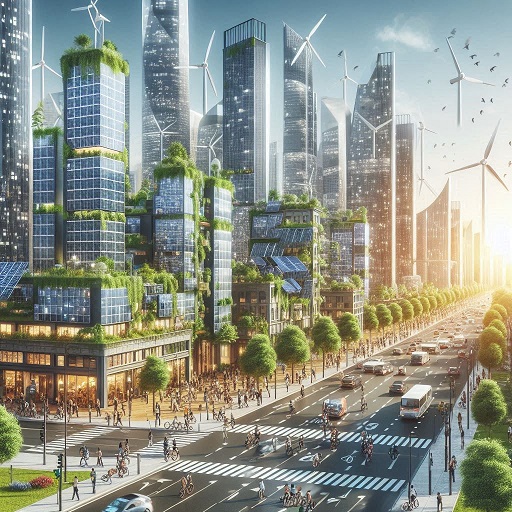Energy harvesting is revolutionizing how industries, cities, and individuals approach energy efficiency. This article delves into its applications across various sectors, from powering IoT devices to enabling sustainable infrastructure in smart cities.
Market Overview
The global energy harvesting system market was valued at USD 0.6 billion in 2023 and is projected to grow to USD 0.9 billion by 2028. This represents a compound annual growth rate (CAGR) of 10.0% during the forecast period from 2023 to 2028.
Several factors are driving this growth, including increasing environmental concerns, the demand for miniaturization and flexibility, and the integration of Internet of Things (IoT) devices into energy harvesting systems for building and home automation.
Introduction to Energy Harvesting Systems
Energy harvesting involves capturing and converting ambient energy into usable electrical power, making it an innovative way to power devices without reliance on traditional energy sources. This section introduces the fundamentals and the importance of this technology.
Download PDF Brochure @ https://www.marketsandmarkets.com/pdfdownloadNew.asp?id=734
How Energy Harvesting Works
Energy harvesting capitalizes on ambient energy sources such as light, motion, heat, and radio frequencies, converting them into electricity through specialized systems. These systems use transducers that turn energy from various sources into electric currents.
Types of Energy Harvesting Systems
Energy harvesting systems come in various forms, each tailored to capture specific types of ambient energy:
- Mechanical Energy Harvesting: Commonly used in industrial applications, converting kinetic energy from machine movements into electricity.
- Solar Energy Harvesting: Uses photovoltaic cells to transform sunlight into electrical power, frequently seen in consumer electronics and building applications.
- Thermal and Piezoelectric Systems: These systems capture thermal gradients or vibrational energy, respectively, and are widely used in both industrial and medical devices.
Industrial Applications of Energy Harvesting
Industries are leveraging energy harvesting to power IoT sensors and reduce dependency on batteries, particularly in remote areas. In factories, it aids in efficient remote monitoring and data gathering.
Energy Harvesting in Consumer Electronics
Smartphones, wearables, and tablets now feature energy harvesting capabilities that help extend battery life. Some wearables and mobile devices utilize ambient light or body heat, reducing the frequency of recharges.
Energy Harvesting for Healthcare
Energy harvesting has advanced the functionality of implanted medical devices, such as pacemakers, by using body heat or movement to power them. Similarly, portable health monitoring gadgets benefit from energy harvesting, enabling longer battery life and consistent monitoring.
Smart Cities and Energy Harvesting
Smart cities rely on energy harvesting for maintaining wireless sensor networks and powering urban infrastructure like smart streetlights and public kiosks. By utilizing solar energy or kinetic energy from traffic, cities can create self-sustaining, interconnected systems.
Applications in Automotive and Transport
Vehicles with energy-harvesting systems can power onboard sensors, reducing reliance on fuel or large batteries. Smart traffic solutions and environmental monitoring also use these systems for continuous, sustainable operation.
Military and Defense Applications
Military devices, particularly those deployed in remote locations, use energy harvesting for prolonged operation without frequent maintenance. Drones and surveillance devices equipped with solar or kinetic energy harvesters can function autonomously for extended periods.
Environmental and Agricultural Benefits
In remote or agricultural settings, energy harvesting can power equipment for monitoring soil quality and crop conditions. This helps farmers and researchers gather real-time data and manage resources more sustainably.
Building Automation and Energy Harvesting
Self-powered systems are increasingly used in building automation, with HVAC, lighting, and even security systems benefiting from energy harvesting technology. Smart buildings can integrate these systems for lower energy costs and minimal environmental impact.
Limitations and Challenges in Energy Harvesting
Despite its potential, energy harvesting faces obstacles like storage limitations and efficiency challenges. Advances in energy storage technology and materials are needed to make harvesting systems more effective.
Future Trends in Energy Harvesting Systems
Research into advanced materials, including nanomaterials and flexible electronics, is expected to revolutionize energy harvesting. Integration with IoT and AI will also expand the applications and effectiveness of these systems.
FAQs
- What are energy harvesting systems?
These systems capture and convert ambient energy into electricity, helping to power devices sustainably. - What is the main benefit of energy harvesting?
Energy harvesting reduces the need for batteries and electricity from the grid, promoting sustainability. - Where is energy harvesting used?
It’s used in various sectors, including industrial IoT, smart cities, healthcare, and automotive industries. - Can energy harvesting work in low-light or low-motion settings?
Yes, certain systems can still capture energy in these settings, though efficiency may vary. - What are the limitations of energy harvesting?
The main limitations are related to storage capacity and efficiency in capturing low levels of energy. - How does energy harvesting support smart city initiatives?
By powering wireless sensors and public infrastructure, energy harvesting supports the sustainable growth of urban areas.
Energy harvesting systems are reshaping power use across industries. By transforming ambient energy into sustainable power, these systems pave the way for greener cities, improved healthcare devices, and more efficient industrial operations.


